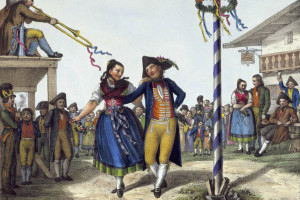From angry gladiators to Suffragette sabotage

ILLUSTRATION: THOMAS FUCHS
Sports and protest often go together: As soon as someone makes a call, somebody else is disputing it. But in recent weeks, the really big clashes have happened off the playing fields, as President Donald Trump and others criticized football players kneeling during the national anthem. Such mixing of sports, politics and protest has ancient roots—on the part of both spectators and players.
An early protest by a player comes down to us in “Lives of the Twelve Caesars” by the Roman historian Suetonius (69-130 A.D.). An unnamed gladiator once refused to fight in front of the Emperor Caligula. Then, the gladiator, seeing he would die anyway, grabbed his trident and killed his would-be victors.









